How to run old software and games on your Mac
Resurrect old apps
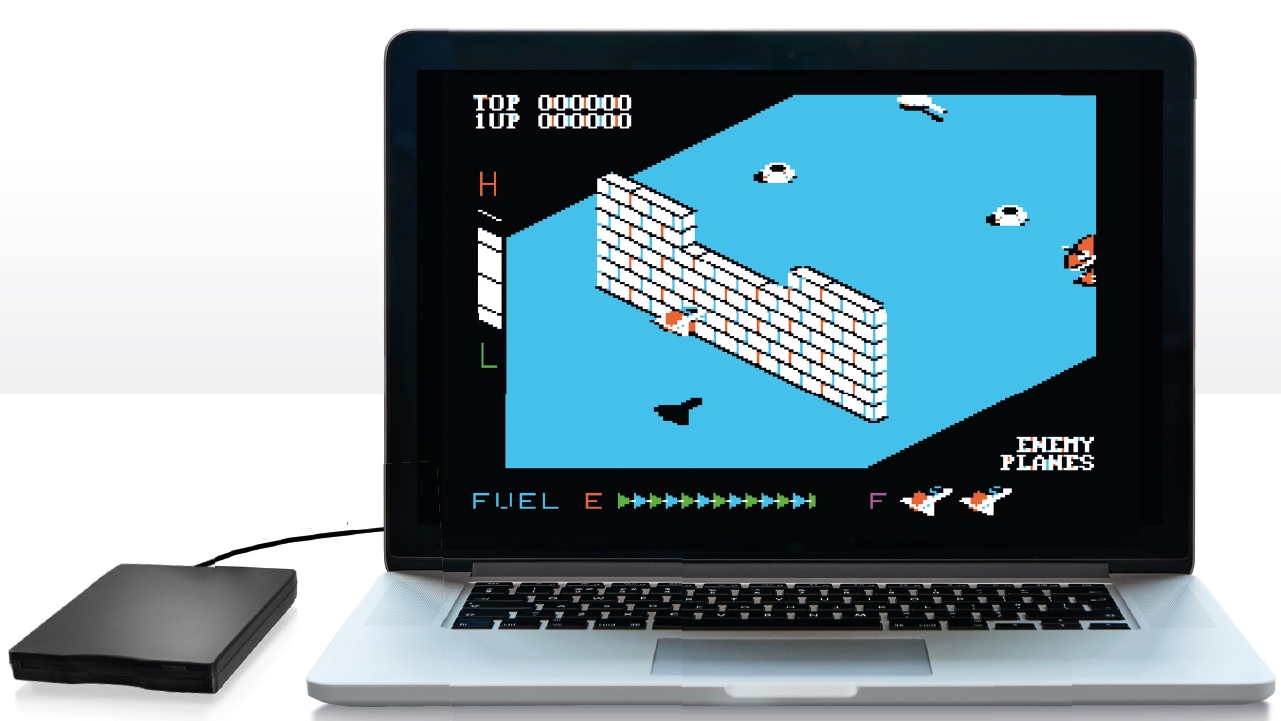
It’s a strange quirk that software becomes obsolete much quicker than hardware.
You can still buy an external USB floppy disk drive from Amazon for less that will read disks created on a Macintosh Classic from 1990.
And yet there are apps written for OS X Leopard that won’t run in OS X El Capitan just seven years later.
Documents that you access regularly naturally survive the passage of time because they get migrated from one format to the next, as you upgrade your Mac. But the dusty box of floppy disks with that unfinished first novel in MacWrite and your father’s carefully researched family tree in an old version of FileMaker Pro are unreadable binary detritus on a modern Mac.
Being able to run old software is the best way to rescue these files, but old Mac apps can be fun too. Even though we undoubtedly live in a golden era of computer and video games, there are still some genuinely worthy classics from the ’80s and ’90s.
And you don’t need to lovingly restore an actual Macintosh Plus just to play Lode Runner. Modern Macs easily have enough horsepower to emulate the older Mac operating systems.
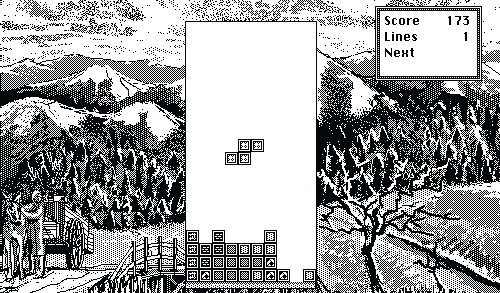
Virtually a PowerPC
Let’s start with OS X. A lot of apps originally developed for 10.5 Leopard or 10.6 Snow Leopard won’t run on later versions.
Get daily insight, inspiration and deals in your inbox
Sign up for breaking news, reviews, opinion, top tech deals, and more.
Snow Leopard was also the last version of OS X to support PowerPC processors. So, if you have any software that originally ran on a G3, G4 or G5 Mac, that’s as far as it could be upgraded.
Unfortunately, running Snow Leopard isn’t as simple as just taking the original install DVD and putting the system on an external drive.
An operating system from five years ago doesn’t have the right drivers for lots of the hardware on a modern Mac, such as a Retina display or USB 3.0 ports.
Instead, you should use either Fusion 8 or Parallels Desktop 12. Either of these can create a virtual machine that runs within your existing OS and allows you to install and run a completely different operating system on top of that.
The virtualisation software takes care of interfacing with your modern hardware, so it works even with older operating systems. The only tiny complication is that Apple’s licensing agreement doesn’t allow the regular edition of Snow Leopard to be installed on a virtual machine, so you need to buy a copy of Snow Leopard Server instead.
This works just the same as the regular edition of Snow Leopard (apart from some system administration features that you’ll never use) but handily, it will also install correctly under Parallels Desktop or VMware Fusion. You can pick up a copy of Snow Leopard Server on eBay for about £50/$60/AU$85, as long as you avoid getting a copy with unlimited licences.
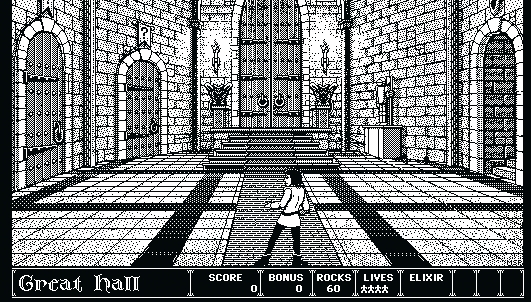
Perhaps you need to roll the clock back even further and run software designed for Mac OS 9? If you still have a Mac running 10.4 Tiger, you might be able to run them using the Classic environment, but this will only work on a Mac with a PowerPC processor.
You can’t run the Classic environment on an Intel Mac, even if you’re running 10.4 from within Parallels or Fusion.
For that, you’ll need to download SheepShaver. This curiously named utility emulates the PowerPC hardware so that you can install OS 9 – or even OS 8.
Because it’s emulating a different hardware architecture, SheepShaver needs to use the system ROM files from one of the older Macs. These are copyrighted by Apple, so you can’t legally use them unless you also own the physical Mac they came from. ROM files for various older Mac models are available for download though, so you don’t need to go through the rigmarole of copying off the system ROM from that old G3-powered Mac in your loft.
Once you have OS 9 running inside your emulator – see the walkthrough on the next page for step-by-step instructions – you’re ready to install some apps.
Even if you no longer have the original disks for your software any more (or perhaps even a drive that will read them!) there are lots of apps that are classed as abandonware.
This is a legally grey area whereby very old software that’s no longer available commercially is distributed for free by enthusiasts. It’s technically still software piracy, but the original copyright holder either can’t be traced or chooses not to enforce their copyright.
For software that’s 20 or more years old, some would argue that downloading it is an ethical act of software preservation. Macintoshgarden.org maintains an extensive library of Mac abandonware, including some classic games from the ’90s.
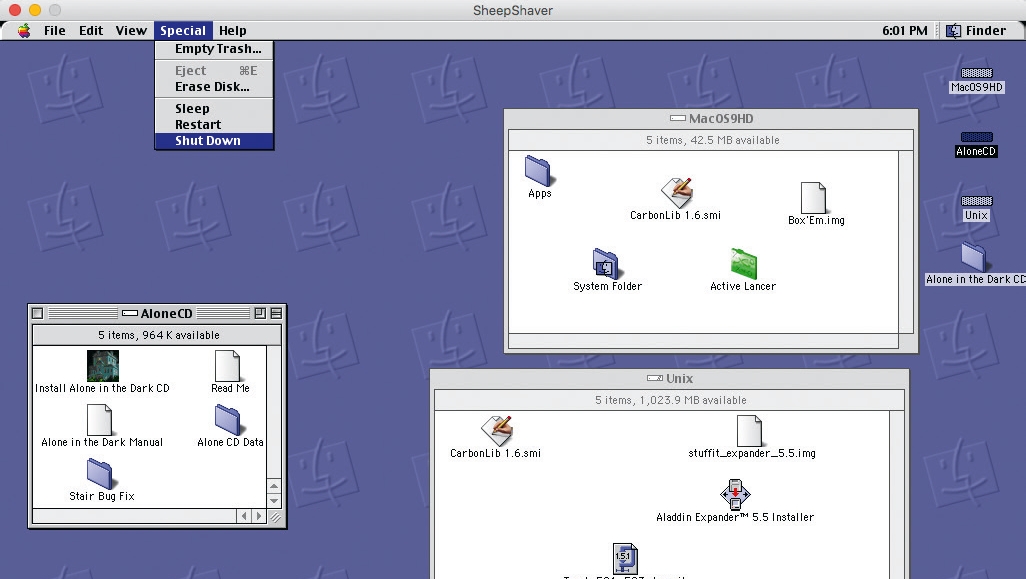
Installing old software
Although you can download apps directly from the web browser running in OS 9, you’ll find it generally much easier to download the files in OS X and then move them across to the emulated OS 9 environment.
SheepShaver uses a shared folder for this purpose; files you you place in that folder from OS X will appear in a virtual disk called ‘Unix’ on the OS 9 desktop.
When you add a new file, you’ll need to close and reopen the Unix folder in OS 9 to see the changes. Most software you find online will in the form of ‘.sit’ files, which have been compressed using the StuffIt utility, and so you’ll need StuffIt Expander to enable you to double-click a sit file in OS X to expand it; you’ll then normally see a ‘.img’ disk image.
Mount these in the emulated OS 9 by adding them to the list of disks in SheepShaver’s preferences. When you quit SheepShaver and restart it, the disk image will appear on the OS 9 desktop, and you can open it and run the app’s installer.
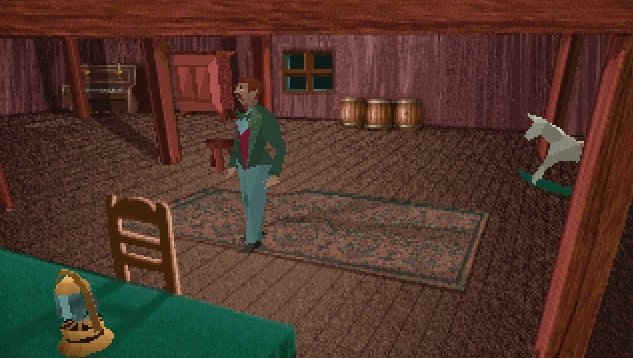
Step back further in time
Finally, if you want to get really retro, there are apps written back when Macs used the Motorola 68000-series of processors, before even the PowerPC chips.
These models ran System 7 and earlier. Modern Macs have so much more computing power than these that you can run a faithful emulation of System 7 using JavaScript in your web browser.
This is a great way to give you a feel for what you’re letting yourself in for, but only a few apps and games are available this way.
To run anything else, you’ll need to install Basilisk II. As before, you’ll need to own a copy of the OS and the system ROM that you’re emulating. Think of this as a more convenient way to access the software on an old Mac you already own, rather than a way of getting a whole extra virtual computer.
Emulating your old Mac’s OS is also a great way to get at software on a Mac that no longer works – it’s a sort of virtual repair.
Basilisk II can emulate a Macintosh Classic or a Macintosh II, and it can theoretically run operating systems all the way back to version 1.0 from 1984. In practice, System 6 is usually the furthest back you need to go. This ought to run virtually all software from the mid ’80s and has much better memory management than earlier versions.